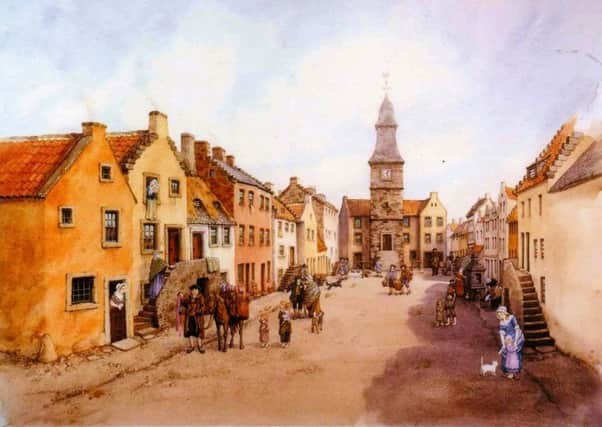Stentmasters '“ running the burgh of Falkirk


Until 1833 there was no council and the affairs of the town were in the hands of a self-appointed group of men without any legal authority, answerable to nobody but themselves. These were the celebrated Stentmasters whose origins lay back in the 1600s when the burgh was growing and communal services like a reliable water supply required to be constructed and then managed.
They represented the merchants and craftsmen of the town and were chosen by their fellows with four merchants and two each of the ten trades – masons, wrights and hammermen, weavers, tailors and shoemakers, brewers, fleshers, bakers and whipmen.
Advertisement
Hide AdAdvertisement
Hide AdIn addition from 1788 the four quarters of the town – Eastburn Bridge, Westburn Bridge, Vicar’s Loan, and the Randygate as Kerse Lane was then called –were each allowed one member though who elected them is not clear. These 28 men met from time to time to ‘cast the stent’, that is, to fix an assessment which they expected the inhabitants of the burgh to pay towards common services especially the water supply.
An estimate was made of an individual’s ability to pay and a ‘stent’ of a pound or two set. Their officer tried to collect what he could – his own wages depended on his success – but there was little attempt at enforcement beyond cultivating the notion of municipal pride and shared responsibility. Neither notion cut much ice with the canny bairns and the kitty was never full. In the 1720s, for example, the Kirk Session was approached by Richard Muirhead the ‘clerk’ who wanted to borrow £20 for two months ‘to meet the claim of the plumber for laying the pipes because they were unwilling to be hard upon the residents of the town until the harvest be over.’ The loan was granted.
Very occasionally a special effort was called for. For example in the early 1800s the wooden pipes of the original water supply were in such a poor condition that the Stentmasters decided to replace them with cast iron and to build a substantial cistern on the south side of the High Street in a street known until last century as Cistern Lane. Other assets that came under their control were the town tolbooth and steeple and the two fire engines which at the time were nothing more than water barrels on horse drawn carts. Later they added the first gas lights. In addition they were responsible for paying the man who rang the steeple bell and for arranging for the quartering of troops who were fairly regularly billeted in Falkirk.
However, the Stentmasters’ most celebrated venture was the erection of a new town steeple in 1814 with a brand new clock and prison rooms to house ‘strolling vagrants and people who commit petty crimes’. The appeal for funds went to the relatively well-to-do citizens who would surely want to contribute ‘liberally to such a laudable and useful undertaking’. The target was nearly £1500 but predictably, less than a third of this was subscribed! The town’s self-appointed managers fell further into debt but despite this they celebrated their acquisition with the greatest possible gusto.
Advertisement
Hide AdAdvertisement
Hide AdIt was their only lasting memorial for just 20 years later, with a first council in place, their role declined though they continued to have influence in municipal affairs until 1859 when they closed the books, passed on their accumulated debt and rode off into the Victorian sunset.